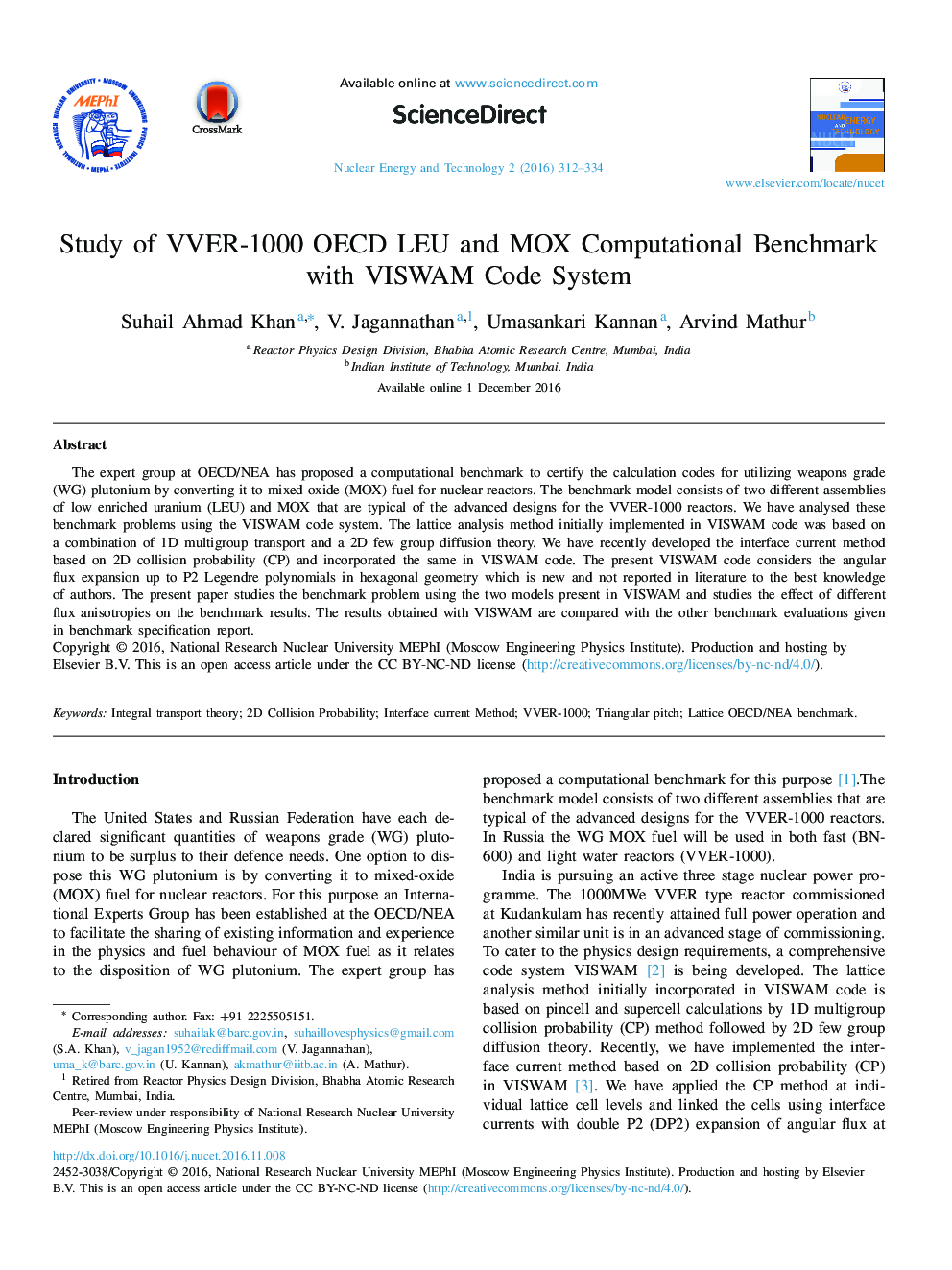| Article ID | Journal | Published Year | Pages | File Type |
|---|---|---|---|---|
| 6846141 | Nuclear Energy and Technology | 2016 | 23 Pages |
Abstract
The expert group at OECD/NEA has proposed a computational benchmark to certify the calculation codes for utilizing weapons grade (WG) plutonium by converting it to mixed-oxide (MOX) fuel for nuclear reactors. The benchmark model consists of two different assemblies of low enriched uranium (LEU) and MOX that are typical of the advanced designs for the VVER-1000 reactors. We have analysed these benchmark problems using the VISWAM code system. The lattice analysis method initially implemented in VISWAM code was based on a combination of 1D multigroup transport and a 2D few group diffusion theory. We have recently developed the interface current method based on 2D collision probability (CP) and incorporated the same in VISWAM code. The present VISWAM code considers the angular flux expansion up to P2 Legendre polynomials in hexagonal geometry which is new and not reported in literature to the best knowledge of authors. The present paper studies the benchmark problem using the two models present in VISWAM and studies the effect of different flux anisotropies on the benchmark results. The results obtained with VISWAM are compared with the other benchmark evaluations given in benchmark specification report.
Keywords
Related Topics
Physical Sciences and Engineering
Energy
Nuclear Energy and Engineering
Authors
Suhail Ahmad Khan, V. Jagannathan, Umasankari Kannan, Arvind Mathur,
